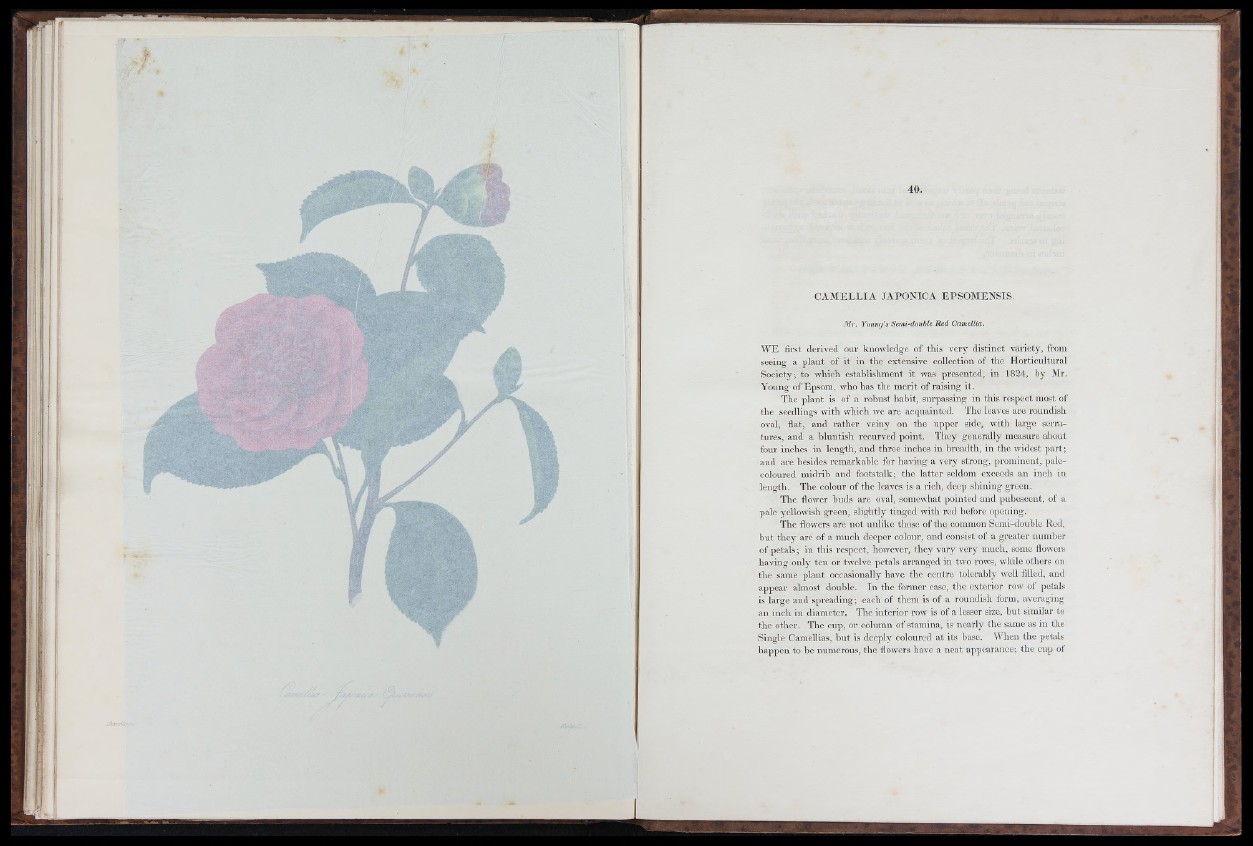
, .V.'. ; V
A - H m -■■&■■■ '■
--,vU'■
a - .
.■ M i
A •f- ■ ■ !
• .'.>-,Ax\.ru <XY'lV.Vi/
A'
■ ■>. ■'
V
k - 5 ; -
fete;
T - Á # i . :
.
■%
■ H - .
:aa.
;i
40.
C A M E L L IA JA PO N IC A EP SOM EN S IS .
i l / r . Y o u n g 's Ssmi-doubU R e d Camellia.
W E first derived our knowledge of this very distinct variety, from
seeing a p lan t of it in the extensive collection of th e Horticultural
Society; to which establishment it was presented, in 1824, by Mr.
Young of Epsom, who has the m e rit of raising it.
The plant is of a robust habit, surpassing in this respect most of
th e seedlings with which we are acquainted. The leaves are roundish
oval, flat, and rather veiny on the upper side, with large serratures,
and a bluntish recurved point. They generally measure about
four inches in length, and three inches in breadth, in th e widest p a r t ;
and are besides remarkable for having a very strong, prominent, pale-
coloured midrib and footstalk; the la tte r seldom exceeds an inch in
length. The colour of th e leaves is a rich, deep shining green.
The flower buds are oval, somewhat pointed and pubescent, of a
pale yellowish green, slightly tinged with red before opening.
The flowers are not unlike those of th e common Serai-double Red,
b u t th ey are of a much deeper colour, and consist of a greater number
of petals; in this respect, however, they vary very much, some flowers
having only ten or twelve petals arranged in two rows, while others on
the same plan t occasionally have the centre tolerably well filled, and
appear almost double. In th e former case, the exterior row of petals
is large and spreading; each of them is of a roundish form, averaging
an in ch in diameter. The interior row is of a lesser size, b u t similar to
the other. The cup, or column of stamina, is nearly the same as in the
Single Camellias, b u t is deeply coloured a t its base. ^Then th e petals
happen to be numerous, th e flowers have a neat appearance; the cup of
ÉÉ id